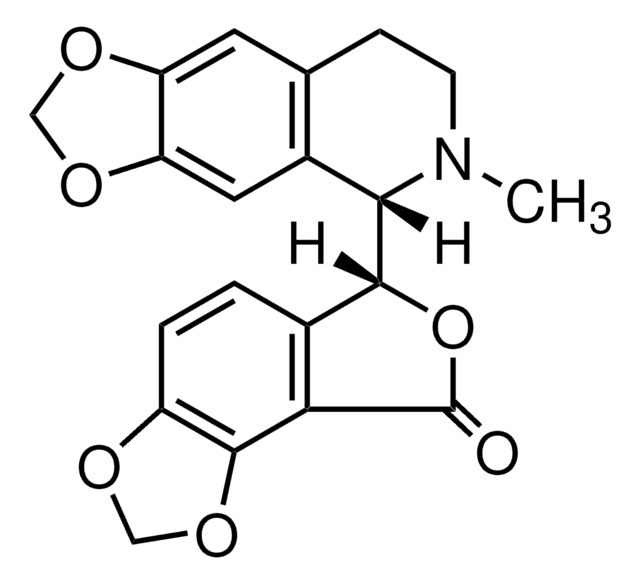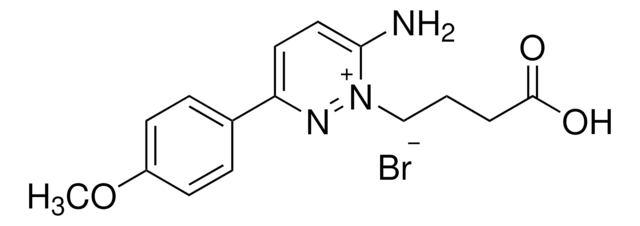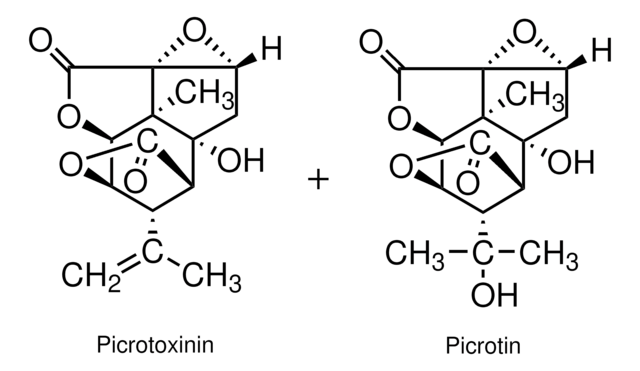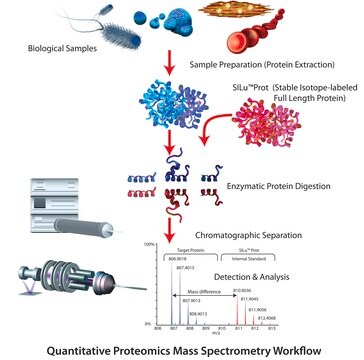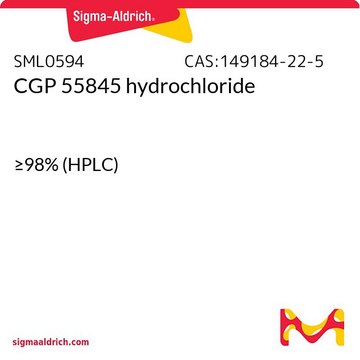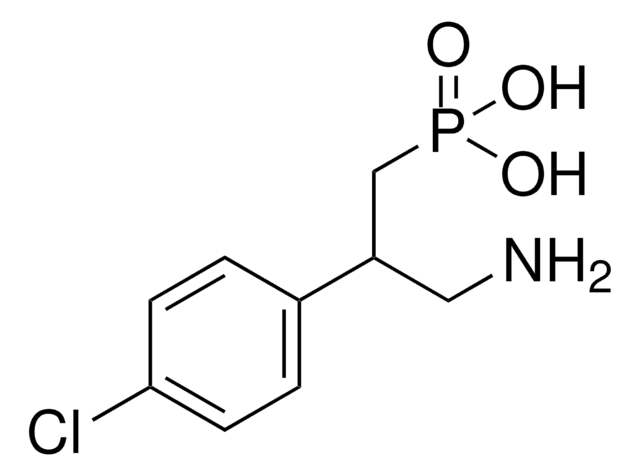SML0593
CGP52432
≥98% (HPLC)
Sinonimo/i:
[3-[[(3,4-Dichlorophenyl)methyl]amino]propyl](diethoxymethyl)-phosphinic acid
About This Item
Prodotti consigliati
Livello qualitativo
Saggio
≥98% (HPLC)
Stato
powder
Condizioni di stoccaggio
desiccated
Colore
white to beige
Solubilità
H2O: 1 mg/mL, clear (warmed)
Temperatura di conservazione
2-8°C
InChI
1S/C15H24Cl2NO4P/c1-3-21-15(22-4-2)23(19,20)9-5-8-18-11-12-6-7-13(16)14(17)10-12/h6-7,10,15,18H,3-5,8-9,11H2,1-2H3,(H,19,20)
GJZVQXWEIYRHBE-UHFFFAOYSA-N
Applicazioni
- to study its effects on the simulation of the onset of status epilepticus (SE) in mice
- for voltage-clamp recording in mice neurons
- to study its effects on the GABAB receptor-mediated neurotransmission in guinea pig hippocampus
Azioni biochim/fisiol
Caratteristiche e vantaggi
Altre note
Codice della classe di stoccaggio
11 - Combustible Solids
Classe di pericolosità dell'acqua (WGK)
WGK 3
Punto d’infiammabilità (°F)
Not applicable
Punto d’infiammabilità (°C)
Not applicable
Scegli una delle versioni più recenti:
Certificati d'analisi (COA)
Non trovi la versione di tuo interesse?
Se hai bisogno di una versione specifica, puoi cercare il certificato tramite il numero di lotto.
Possiedi già questo prodotto?
I documenti relativi ai prodotti acquistati recentemente sono disponibili nell’Archivio dei documenti.
Il team dei nostri ricercatori vanta grande esperienza in tutte le aree della ricerca quali Life Science, scienza dei materiali, sintesi chimica, cromatografia, discipline analitiche, ecc..
Contatta l'Assistenza Tecnica.